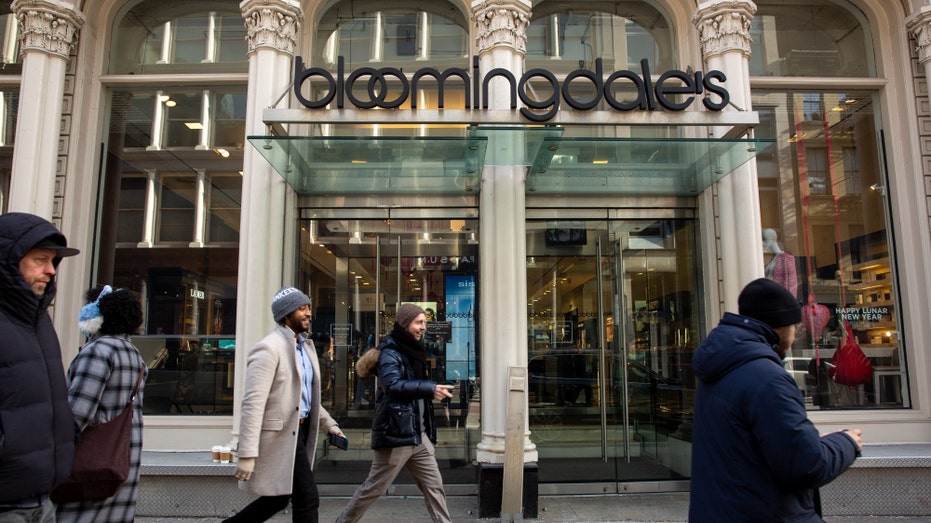Fed's favorite inflation gauge rose 0.3% in January
Core inflation drops to lowest level since February 2021
Federal Reserve is dealing with a ‘rebound’ with some key inflation data
FOX Business’ Kelly O’Grady provides analysis of the U.S.’s inflation data as the Federal Reserve continues to grapple with a smooth economic recovery.
An inflation measure closely watched by the Federal Reserve rose again in January as high prices continued to weigh on millions of Americans.
The personal consumption expenditures index showed that consumer prices rose 0.3% from the previous month, according to the Commerce Department. On an annual basis, prices climbed 2.4% – down slightly from the 2.6% reading recorded the previous month.
The figures were both in line with estimates from Refintiv economists.
"PCE inflation, which is the Fed’s preferred metric, came in along expectations but the hottest in several months," said Sonu Varghese, global macro strategist at Carson Group. "The jump in inflation is mostly because of a ‘January price effect’ for several core services categories, and likely to pull back over the next few months."
AMERICANS ARE YANKING MONEY OUT OF THEIR RETIREMENT SAVINGS TO COVER BILLS

Customers shop at a supermarket in Foster City, California, on Sept. 13, 2023. (Li Jianguo/Xinhua via / Getty Images)
Prices for services increased 0.6% for the month and remain up 3.9% from the same time last year, while the cost of goods dropped 0.2% on a monthly basis despite a 0.5% increase in the cost of food, according to the report. Goods prices are down 0.5% from the prior year.
In a sign the Fed's fight against inflation is slowly making progress, core prices – which strip out the more volatile measurements of food and energy – climbed 0.4% from the previous month and 2.8% from the previous year. It marked the best reading for core inflation since February 2021.
MORTGAGE RATES OVER 7% ARE THROTTLING HOMEBUYER DEMAND
While the Fed is targeting the PCE headline figure as it tries to wrestle consumer prices back to 2%, Chair Jerome Powell previously told reporters that core data is actually a better indicator of inflation. Both the core and headline numbers point to inflation that is slowly returning to the Fed's preferred 2% target.

A Bloomingdale's store in the Soho neighborhood of New York on Jan. 22, 2024. (Shelby Knowles/Bloomberg via / Getty Images)
Other figures included in the report showed that consumer spending rose just 0.2% in January compared with a 0.7% increase in December, suggesting that Americans are pumping the brakes on spending after the pivotal holiday season. Many economists anticipate that spending will slow further in the coming months as consumers continue to grapple with expensive goods, high interest rates and the resumption of federal student loan payments.
The report also showed a surprise jump in personal income, which climbed 1%, more than double the 0.4% estimate.
Stock index futures turned mostly higher and Treasury yields retreated after the report came in as expected.
| Ticker | Security | Last | Change | Change % |
|---|---|---|---|---|
| I:DJI | DOW JONES AVERAGES | 48488.59 | -870.74 | -1.76% |
| I:COMP | NASDAQ COMPOSITE INDEX | 22954.322403 | -561.07 | -2.39% |
| SP500 | S&P 500 | 6796.86 | -143.15 | -2.06% |
CLICK HERE TO READ MORE ON FOX BUSINESS
The Fed skipped a rate hike during its meeting in January but signaled it wants to see further progress on inflation before it begins to reduce rates.
"Moderate numbers from the Fed’s preferred inflation gauge may lower temperatures after ‘hot’ CPI and PPI readings a couple of weeks ago," said Chris Larkin, managing director of trading and investing at E*Trade. "While rate cuts are still unlikely until the second half of the year, today’s data may ease some immediate doubts among stock bulls who had begun to wonder if the Fed would dig in its heels and keep rates higher for longer."





















